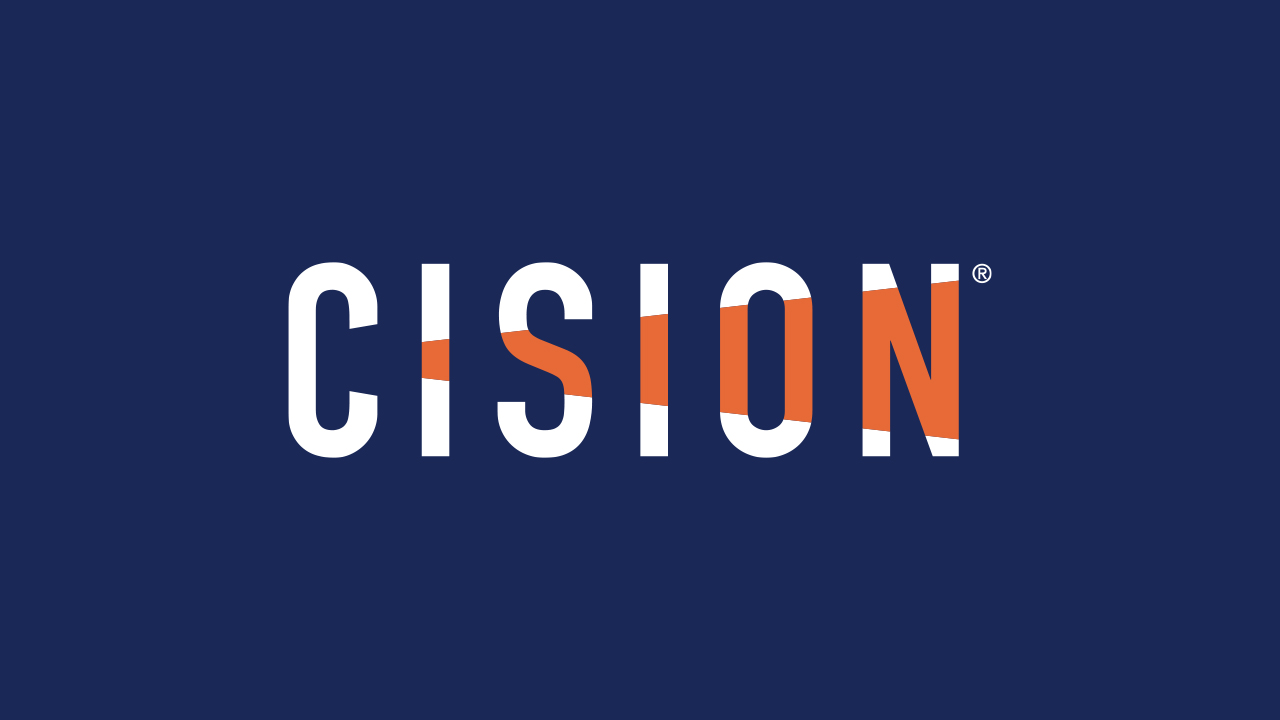Online reputation monitoring tools are essential for keeping track of a brand's success and credibility. They provide insights into current brand sentiment, show users how to measure brand awareness, and help businesses plan their next steps.
Good reputation management can be the difference between a successful business and one that falls into ruin. When it works correctly, reputation monitoring tracks and analyses positive sentiment, highlights trends, picks up negative reviews, and shapes your business decisions.
Businesses therefore need an all-in-one online reputation management tool that supports a brand and helps it flourish.
In this guide, we'll walk you through what you need to know about online reputation management.
We'll also look at the key features of a reputation monitoring tool and how they can be used to stay on top of your brand's public image.
Discover the best ones out there, how to find a match for your priorities, and how to leverage your data for business growth.
Understanding Online Reputation
In today’s digital landscape, a brand's reputation online can be both its strongest asset and most vulnerable point. It's essential to grasp not just what online reputation is but also its significance and the factors that shape it. Let's dive into the crucial aspects.
Importance of Online Reputation
Online reputation is pivotal because it's often the first impression a potential customer has of your brand. A positive online presence can lead to:
Boosted trust: When customers see positive feedback and reviews, their trust increases.
Enhanced credibility: Responses on review sites and online interactions offer greater credibility for brands as fellow users advocate to others.
Greater visibility: A strong online reputation can improve rankings in search engine results, leading to more exposure.
It's important to understand that a brand's online reputation has short- and long-term trends. One bad social post could have a quick negative impact on your brand's reputation.
However, a series of successful campaigns over many years can elevate it, and insulate the brand against minor reputational errors.
Components of Online Reputation
Several elements combine to form our brand's online presence and, subsequently, its reputation. Some are passive and some are active, but all combine to create a strong brand reputation.
Active components include:
Content and Public Relations: Brand reputation is heavily influenced by the work of public relations and marketing managers. From ad campaigns to working with influencers, strong PR provides the grounding for a strong reputation.
Customer Loyalty: Ensuring customers are happy and loyal to your brand makes it easier to maintain a stronger online reputation.
Quality Products and Services: Whatever you sell or market, it has to be good. Quality products and services that stand out and offer customers something to shout about will usually lead to enhanced online reputation.
Passive components include:
Public Feedback: Comments, reviews, and ratings on various platforms give you direct feedback about your brand or product.
Social Media Conversations: Discussions and mentions have a direct impact on how our brand is perceived. These might be discussions between other users that don't link in your brand. Social media listening software is crucial for tracking this.
Search Engine Results: How our brand appears in searches often shapes the public's perception. Businesses can be proactive here and employ SEO solutions to boost performance.
You can monitor the active and passive components in top reputation management tools, and keep abreast of all the data.
Key Features of Reputation Monitoring Tools
Now we know the components of online reputation monitoring, it's time to look at the features top platforms provide to small, medium and large businesses. These features collectively facilitate a comprehensive understanding of a brand's online presence.
1. Full Market Access
Top tools like CisionOne's reputation management platform allow you total access to the online market. This means listening to millions of websites and billions of articles, social posts, and comments to track mentions and more.
It doesn't matter whether you're a taco store in downtown Boston or a multi-national energy company, you need full access to the market to gauge your online reputation.
2. Real-Time Alerts
Real-time alerts are fundamental to promptly managing potential issues that could impact our brand's reputation. When configured, these alerts notify users when brands are mentioned across online platforms.
It allows teams to respond quickly to customer feedback, press mentions, or social media conversations.
Online alert types include mention of brand keywords, backlinks, and hashtag usage. Increasingly, tools are able to monitor real-time mentions in videos on podcasts, news sites, and YouTube, so you can hear – as well see – who is talking about your brand.
3. Sentiment Analysis
Sentiment analysis interprets your collected mentions and classifies the emotions behind them.
By assessing whether a review or social media post is positive, negative, or neutral, you gain immediate insights into public perception and can measure the impact of your reputation management efforts.
Brand sentiment is hugely important in a continually-evolving online industry. After all, not all news is good news.
If you run a campaign that everyone is talking about but discover there is no positive sentiment to your efforts, then you can do something about it.
4. Trend Identification
The ability to identify trends is crucial for adapting strategies and staying relevant.
Trend identification with monitoring tools helps to track the prevalence of brand-related discussions and measure interest in specific topics or campaigns.
You can use this data to pinpoint emerging patterns in consumer behavior and preferences, informing your marketing and engagement strategies.
Best Online Reputation Monitoring Tools
There are plenty of online reputation monitoring tools on the market. Finding one that suits you doesn't have to be difficult.
As we've detailed above, a successful reputation monitoring tool needs full market access, offer real-time alerts and sentiment analysis, and track trends in order to inform your future decisions.
With that in mind, here are two of the best online reputation management options for small, medium, and large companies.
1. CisionOne
Leveraging CisionOne is about embracing the power of advanced analytics and strategic market intelligence for effective reputation management.
With a tool like CisionOne, you can harness the potential of AI-driven media analysis and ensure a brand's message resonates with the desired audience.
You can then collect data to monitor the impact on stakeholder behaviors and business outcomes.
Core components to the CisionOne platform include:
Global Media Monitoring: Keep a vigilant eye on online conversations and media coverage across all channels – paid, earned, social, and owned.
Real-Time Insights: With CisionOne, get equipped with a wealth of tools to proactively respond to trends and manage your brand's reputation in one place.
AI-Powered Analytics: Sophisticated algorithms help users distill meaning and gauge the effectiveness of all communications efforts.
2. Brandwatch
Brandwatch is a robust platform for overseeing any brand's presence and influence across various social media networks.
Social listening is what Brandwatch does best. Users who need to prioritize how a brand is perceived within online conversations thrive when using the Brandwatch platform.
Key Features Include:
Audience Understanding Tools: Obtaining real-time data on audience interactions to allow for tailored, effective content. Audience profile cards and key demographic insights help users understand the market better.
Social Sentiment Analysis: Get a complete understanding of what social media users think about your product that goes beyond simply tracking mentions online.
Influencer Origins: See where positive and negative sentiment of your brand starts from, and identify the influential accounts you need to be aware of when managing your brand.
Choosing the Right Reputation Management Tools
We've looked at the key features of reputation management tools and provided two industry-leading examples for you to discover.
The next step is to understand which tool is right for you. There are three core factors at play here:
Software vs Platform
Scalability and Integration
Reporting and Analytics
Let's take a look at each one…
Software vs Platform-Specific Tools
Most social media platforms offer their own platform for monitoring online reputation. However, they might not tell you the whole story. For example, you can't access full sentiment analysis on X's in-house monitoring service like you can via CisionOne.
It's also difficult to handle reams of different data sets if you trying to monitor your brand online across various platforms.
Dealing with separate data banks from Meta, Google Analytics, TikTok, X, and Youtube could quickly become tiresome.
Usually the best options is a software solution the captures the whole market. These reputation management tools hear and see everything that's going on and brings all the data into one place.
So, you need to ask yourself what you plan to monitor? If you only need to minonitor your brand reputation on Facebook and Instagram because that's the only place you sell your products then the Meta Business suite is enough.
However, if you want to go beyond that, track mentions on other channels, and monitor your reach across multiple platforms like video and audio, then you need a software solution.
Scalability and Integration
Monitoring online reputation needs to be scaleable. There's no point focusing on just one social platform if your brand is seeking to attract attention across multiple vendors.
It's important, then, to seek a scalable software solution that can integrate numerous websites and platforms in one place.
This scalability means your brand monitoring actives can grow hand-in-hand as your brand grows.
Reporting and Analytics
Collecting monitoring data from across the internet means nothing if you can't report, analyse, and act upon it. Top online reputation management tools don't just collect data but allow you to form reports to share with relevant stakeholders.
Armed with this analysis, you can begin to fine-tune your strategy around brand positioning, future products and services, and crisis management.
For example, say you receive real-time analysis that customers in Nevada don't like your beer anymore. Your beer is enjoyed across the US but your reputation in The Silver State is tanking because of a failed commercial campaign.
Quick reporting means you can predict reputational damage before it gets too bad and make changes to your strategy.
Managing Online Reviews
One of the core components to reputation management is overseeing online reviews. Customers are free to jump on review sites and say what they want.
If they don't like what they bought from you then they're more likely to let others know how they feel, not you.
Tracking industry specific review sites is therefore hugely important. Here's how to do it correctly:
Responding to Reviews
It is often best practice to promptly and appropriately respond to online reviews, be they positive or negative. Responding helps foster trust between you and your customer base and is the best management option you have that doesn't require software solutions.
To do this effectively, you'll need to:
Acknowledge each review, showing customers that their feedback is important.
Personalize your responses rather than using generic replies to show that you value individual customer experiences.
Leveraging Positive Reviews
If someone is going to write good things about you or your business, then why not highlight it? After all, it's free positive brand reputation. Someone else is doing the work for you and all you need to do is leverage that positive sentiment to improve your reputation.
To do this, you'll need to:
Highlight outstanding feedback on your website, social channels, and publicity.
Engage with warm online reviews to create a sense of community and appreciation.
Addressing Negative Reviews
A negative review is far more important to manage than a positive one, and this is where the value of review management is truly understood.
Handling negative comments or sentiment well can flip a company's reputation from bad to good in an instant.
To do this, you'll need to be proactive and:
Promptly reply to all and any concerns, to show you are attentive and proactive.
Constructively resolve any issues either by taking the conversation offline, pledging to improve your service or product, or even thanking those for highlighting problems with your company.
Monitoring Social Media
It's one thing to manage posts on review websites and another to stay on top of social media. Social reviews come thick and fast and not always in the form of reviews.
Often they are throw-away comments from X users, YouTubers or TikTok fanatics who are simply chatting with friends. Not every social interaction about your brand is directed to you. So, you need to monitor social media platforms and listen in to what's being said.
You can do this through effective online reputation management software. Social media monitoring allows you to:
Keep tabs on how your brand is perceived
Actively engage with your audience
Monitor your competitors to maintain a competitive edge
Here are some steps to achieving this.
1. Track Brand Mentions
Tracking brand mentions ensures you are always in the know when it comes to public perception. By using sophisticated tools like Brandwatch that offer sentiment analysis, you can swiftly gauge the emotional tone behind these mentions.
2. Engage with Audiences
Brand monitoring is nothing if you don't engage with your audience. After all, failing to join the conversation means you have no control of where it will lead.
By listening to social media mentions, you can start to understand your audience. Do it well and you can use social media engagement to bring potential audiences and customers on-side, and improve your brand reputation along the way.
3. Monitor Competitors
Keep an eye on social media accounts from your competitors to see how they interact with their customers and audiences. Track, too, how their social media management techniques work in real time.
If a competitor is going through a period of reputational management issues then monitoring their outcomes will give you the data you need to avoid their mistakes.
Crisis Management and Prevention
As we've discussed above, online reputation management is all about short- and long-term actions. You need to be reactive in the moment and also stay true to your overarching strategy. This works perfectly until a crisis hits. At this point, you need to spring into action.
Effective social media management, for example, is about monitoring your reputational risks in real time while also mapping out steps to improve your brand reputation. When crisis hits, you're ready to spring into action.
Here are some crises that may fall your way, and how to deal with them.
1. Proactive Monitoring Strategies
Being proactive with your reputation monitoring means you can spot issues before they become negative trends. This could be something as easy as tracking keywords and responding to feedback.
Or you might need to use an online reputation monitoring tool to understand the sentiment of your brand mentions.
Being proactive when monitoring takes time and is a never-ending job, but is also hugely important. It means you can confidently allocate resources towards long-term planning, safe in the knowledge that you're on top of your current brand reputation.
2. Handling a Brand Crisis
Being proactive also means you have time to formulate a proper response if a crisis hits, and have it ready to use.
This is a proactive way of being reactive and can save your brand reputation. Aspects to include when formulating a plan include:
Assigning a dedicated crisis management team.
Contacting all relevant stakeholders.
Publishing pre-approved messages to maintain transparency and consistency.
3. Resolution and Follow-up
Brands cannot simply get back to the day-to-day once a crisis has struck. Doing so risks making the same mistakes again and attracting future problems. Being able to resolve issues and follow them up is part of the prevention side of crisis management.
You need to assess the damage to your reputation and create clear communication to ensure it doesn't happen again. You can use reputation management tools to help re-set after a crisis and start afresh.
Measuring Monitoring Success
Finally, it's time to talk about the successes that come with online reputation management. Using online reputation management software allows you to collect quantifiable metrics and robust data, so you can spot what you're doing right.
This may be about tracking positive comments or perhaps dealing with negative reviews. You might have received surprising customer feedback about a new product, or found that brand mentions increase when you heighten your exposure on certain platforms.
In order to measure brand monitoring success, you need to go down the following road:
1. Use Metrics and KPIs
First, you need to identify the metrics and key performance indicators (KPIs) required for useful reputation monitoring. After all, there's no point collecting data if you don't know what to do with it.
Typical KPIs for online brands include:
Volume of Online Mentions: Mention volume indicates visibility across the internet, from social media platforms to news broadcasts.
Sentiment Analysis: The number of positive or negative mentions, and the ratio between them, helps to assess public perception.
Engagement: Interaction with our posts or mentions, such as though social media engagement, reflects audience involvement.
Influence Score: Track the clout of individuals or entities mentioning your brand and discover what affect that has on it.
Review Scores: Get immediate brand sentiment the old way with ratings from various platforms that indicate customer satisfaction.
2. Collecting and Analyzing Data
Using a reputation monitoring tool to oversee your KPIs through a range of metrics is one thing. Collecting and analysing that data is what you need to truly master online reputation monitoring.
Here are the best ways to begin collecting and analysing data from your review monitoring activity:
Data Aggregation: Gather data systematically from social media, blogs, forums, and review sites, and channel it into software on a reputation monitoring tool that can properly process it.
Data Segmentation: Next, categorise the collected data into sentiments, sources, and influence levels. This is where you start to understand the data you've collected.
Trend Analysis: Next, observe trends over time to gauge your long-term reputation health. It's essential when brand monitoring to consider both the short- and long-term impacts of your actions.
Competitor Benchmarking: Benchmark your data with competitors to see where you can improve. You might, for example, spot that your brand reputation is flourishing on Youtube while rivals have a competitive advantage on TikTok.
Create Reports and Act: Armed with your data, it's time to build reports that provide key actions moving forward so you can evolve your brand and stay on top of the game.








